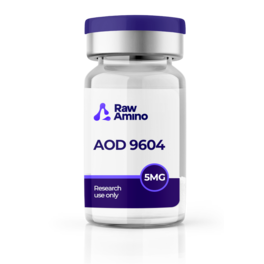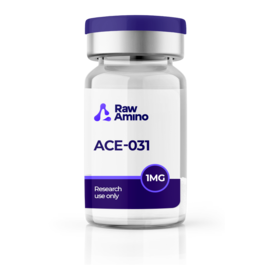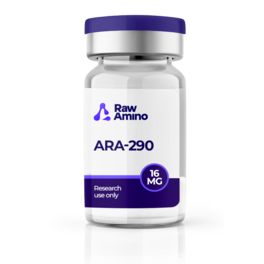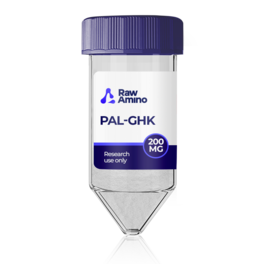
Palmitoyl Tetrapeptide-7 – 200MG
$184.00
Discount per Quantity
| Quantity | Discount | Price |
|---|---|---|
| 5 - 8 | 5% | $174.80 |
| 9 + | 10% | $165.60 |
Scientific Overview of Palmitoyl Tetrapeptide-7
Palmitoyl Tetrapeptide-7, also referred to as Pal-Gly-Gln-Pro-Arg-OH, N-Palmitoylrigin, Palmitoyl-GQPR, and Rigin, is a synthetic matrikine-related peptide designed for research into extracellular matrix (ECM) activity. It is structurally related to small bioactive fragments that are thought to influence cell-to-cell signaling and ECM remodeling. Investigations have focused on its possible role in modulating pathways connected with collagen stability, inflammatory markers, and dermal-epidermal junction integrity.
Studies and Research Data
Palmitoyl Tetrapeptide-7 Research in Oral Models
Investigations into oral biology suggest that Palmitoyl Tetrapeptide-7 may influence enzymes involved in ECM degradation, including matrix metalloproteinases (MMPs). Because MMPs are associated with connective tissue remodeling and inflammation, some researchers have hypothesized that modulation by this peptide might preserve ECM structure within periodontal environments. Preliminary discussions point toward a potential role in limiting degradation observed in conditions such as periodontitis, though these outcomes remain theoretical.
Collagen and ECM Remodeling
Experimental studies propose that Palmitoyl Tetrapeptide-7 may encourage the synthesis of ECM proteins such as collagen and laminins, which are thought to contribute to the structural framework of tissues. Researchers have also noted potential changes in basement membrane proteins, including collagen type VII, which has been linked to the anchoring of dermal and epidermal layers. Findings suggest that supporting these pathways could strengthen tissue stability and enhance repair processes in laboratory contexts.
Palmitoyl Tetrapeptide-7 Explorations in Skin-Related Research
A number of studies have examined Palmitoyl Tetrapeptide-7 in relation to skin resilience. Reports suggest that the peptide may influence inflammatory markers, including interleukin-6, which is associated with cellular stress and ECM breakdown. Other experiments have described its possible role in counteracting environmental factors such as UV radiation. Some groups have also investigated combinations with other peptides, such as Palmitoyl Oligopeptide (often referenced collectively as Matrixyl 3000), with indications of possible synergistic action in collagen support and ECM maintenance.
Palmitoyl Tetrapeptide-7 Observations in Aging Models
In experimental aging models, Palmitoyl Tetrapeptide-7 has been associated with changes in dermal density, elasticity, and wrinkle depth. Early data suggest that research formulations containing the peptide may coincide with reduced visible signs of structural decline in the skin barrier over time. While these findings highlight intriguing directions for study, further independent and controlled work remains necessary to clarify reproducibility and underlying mechanisms.
Conclusion
Research into Palmitoyl Tetrapeptide-7 centers on its potential role in ECM stabilization, collagen synthesis, and inflammatory marker regulation. Experimental work has extended across oral, dermatological, and aging-related models, with recurring interest in its interaction with metalloproteinases and basement membrane proteins. Current findings suggest possible relevance to tissue resilience and remodeling, though broader validation and continued laboratory investigation are still required.
References
- Resende, Diana I S P et al. “Usage of Synthetic Peptides in Cosmetics for Sensitive Skin.” Pharmaceuticals (Basel, Switzerland) vol. 14,8 702. 21 Jul. 2021. doi:10.3390/ph14080702
- National Center for Biotechnology Information (2023). PubChem Compound Summary for Palmitoyl Tetrapeptide-7.
- Marta Salvador-Ferreira et al. Trending Anti-Aging Peptides. MDPI Journal, Vol 7, Issue 4. https://www.mdpi.com/2079-9284/7/4/91
- Mondon P, Hillion M, Peschard O, Andre N, Marchand T, Doridot E, Feuilloley MG, Pionneau C, Chardonnet S. Evaluation of dermal extracellular matrix and epidermal-dermal junction modifications using peptide applications. J Cosmet Dermatol. 2015 Jun;14(2):152-60.
- Hahn Hyung Jin et al. Instrumental evaluation of peptide-based cosmetic formulations on aged skin. Experimental and Therapeutic Medicine, Jun 2016.
- Sorsa T, Tjäderhane L, Salo T. Matrix metalloproteinases in oral diseases. Oral Dis. 2004 Nov;10(6):311-8. doi:10.1111/j.1601-0825.2004.01038.x.
Disclaimer:
The products mentioned are intended solely for laboratory research and in-vitro experimentation. They are not approved for human or animal use of any kind. All details provided are for educational purposes only. By purchasing from this site, you agree to comply with our Terms and Conditions.
Only logged in customers may leave a review.





Reviews
There are no reviews yet.